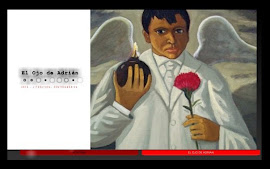
A Modular Framework
Eduardo Navas / SAL-USA
A groundbreaking exhibition that brings together artists from Latin America that have been producing new media work since the mid-nineties.
Modular Framework is an exhibition that brings together artists from Latin America, or artists who have ties to Latin America, and have been producing new media work since at least the mid-nineties, when new media and digital art began to take shape. Most of the works included in this exhibition are recent, and were chosen as examples of diverse and rigorous art practices. The artists, themselves, while they crossover to art practice at large, are pioneers in digital and new media art in their own countries and for this reason they were invited to participate in A Modular Framework.
This exhibition is the first of its kind in the Central American Region, and as such its purpose is to better acquaint the local culture with new media and digital art practice. At the same time, the exhibit is designed as a marking point, a fragmentary modular assessment of the rich production of new media art by a specific set of artists who share similarities in their approach to the medium of digital art as a proper practice. The works included comment in one way or another on interconnectivity and possibilities of communication by exploring diverse interests from politics to aesthetics.
The exhibit takes place in two venues, the Cultural Center and the Museum of Santa Tecla in San Salvador. Here I share brief descriptions and images of the installations:
Fernando Orellana, El Salvador/USA
Plain Text (2008)
(Installation with plasma screens)
This work is inspired by the Infinite Monkey theorem, which proposes that if one has an infinite number of monkeys and typewriters, one can assign the monkeys to write any text.
Belén Gache, Argentina
Wordtoys (2006)
(Website)
An online work in which the user can explore various periods of literature. “Wordtoys” comments on the works of Carol, Cervantes, and Borges among many others.
Mayra Barraza, El Salvador
100 dias en republica de la muerte (2006)
100 Days in the Republic of Murder
(blog)
A blog that reported on violent murders that took place in El Salvador for 100 days, between September and December 2006. “Republic of Murder” functions as a space to reflect on Salvadoran violence.
Arcangel Constantini, México
Atari Noise: Como en su casa (
2000 al presente)
Atari Noise: At home
(Installation)
This installation consists of a typical middle class living room from the 1980’s, in which teenagers would play Atari video games. The Atari console has been hacked by the artist to present abstract patterns.
Brian Mackern, Uruguay
El Temporal de Santa Rosa (2002)
The Storm of Santa Rosa
Audio-visual installation
This installation was inspired by the Storm of Santa Rosa which took place between the 20th of August and the 8th of September of 2002, in Montevideo, Uruguay. "The Storm of Santa Rosa" repositions the map of the Americas upside down.
Gustavo Romano, Argentina
IP Poetry (2006)
(Audio Visual Installation)
Poems created according to online searches. Pre-defined phrases are finished according to what is found on Google, following the original phrase.
Giselle Beiguelman, Brazil
Sometimes (2007)
(Interactive projection/ Generative Video)
Since 2007 Sometimes is part of the ZKM Collection
A metaphorical installation that comments on the connection between mobile technology and the urban landscape. “Sometimes” encourages the gallery visitor to manipulate imagery taken originally with a cell phone by the artist.
Paul Ramirez-Jonas, Honduras/USA
Another Day (2003)
(Instalación de tres monitores / three monitors installation)
This video installation consists of three monitors that show the sunrise taking place in 90 cities around the world. Another Day is designed to make reference to airports and train stations.
B.A.N.G. Lab Collective and Electronic Disturbance Theater, USA
Transborder Immigrant Tool (2010)
This application is a code-switch created by Electronic Disturbance Theater and Bang Lab. The software is designed to convert disposed cellphones into navigational systems between the border of the United States and Mexico. The software is presented as an art installation to open a space for dialogue and discuss the complexity of borders in a time of global immigration.
Antonio Mendoza, Cuba/USA
Idiotrobot.com (2010)
(Two Channel Installation)
A two-channel installation that also functions on the web. Idiotrobot.com juxtaposes two quicktime movie clips, which are remixes of pop-cultural imagery found just about everywhere.
Isabel Restrepo, Colombia
Atandocabos (2010)
Atandocabos is a video projection that integrates personal histories to objects of sentimental value in juxtaposition with autobiographic imagery. In this installation a hidden object is exposed as the user moves in front of the screen.







